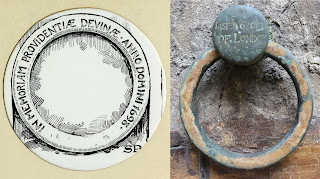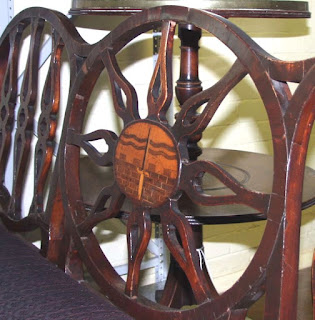 |
| Caitlin presents the healing waters of Bath |
The hot
springs at Bath have long been considered to heal the sick. The Romans mainly
used baths for leisure, but several writers, such as Pliny the Elder,
Asclepiades and Celsus, talked about the therapeutic benefits.
In Britain,
for about 1500 years the belief was that the hot water balanced the humours,
which would make you healthy again. As the minerals gave it a dry taste and
immersion made you urinate more, hot baths were considered hot/dry, which is
odd, as you would think a hot bath would be hot/wet!
 |
| The four humours and their interactions |
By the
medieval period, the Church was against bathing, calling it a luxury. It considered
the Roman baths to be immoral, so many baths fell into disrepair. Later, the
Church condoned the use of bathing for healing/spiritual purification, and so
in the 1100s the Kings Baths were built on the sacred spring by the Bishop of
Bath at the time.
As the Baths
became more and more popular, there were even some royal visitors such as King
Charles I in the 1600s and Queen Anne in 1702 and 1703. By the Georgian period,
people began to drink the water instead of bathing with the crowds. In 1706,
the Pump Room was built for those who wished to drink the water, rather than
bathe in it. Drinking the water became much more popular and trendier so the
Pump Room was expanded in 1795.
 |
| Glass bottle for "NOTED BATH WATERS, 1894" |
With more
competition from other spa towns, like Tunbridge Wells and Leamington Spa, in
Britain, new treatments were on offer at the Spa Treatment Centre in Bath, such
as electrotherapy and needle douches. These new treatments boosted visitors,
and by the 1890s, 100,000 people had visited the baths. It was also during this
period that the remains of the Roman baths were revealed, although evidence of
a Roman Bath house in the area had been known since 1755.
 |
| Spa treatment photographs. L: Man standing in needle douche; R: Man being lowered into the Hot Bath |
The
beginning of the 20th century brought new treatment innovations with
the discovery of radon and radiotherapy, which helped keep the Spa Treatment
Centre visitors numbers high. However, after the Second World War, visitor
numbers declined due to fewer people travelling for leisure, and in 1948, treatment
centre was under the control of the NHS. Treatments soon were only available to
those with a prescription, and then in 1978 the Bath treatment centres were
shut after spa treatment therapy was dismissed by orthodox medicine.
Caitlin
Collections Volunteer




















.jpg)

















